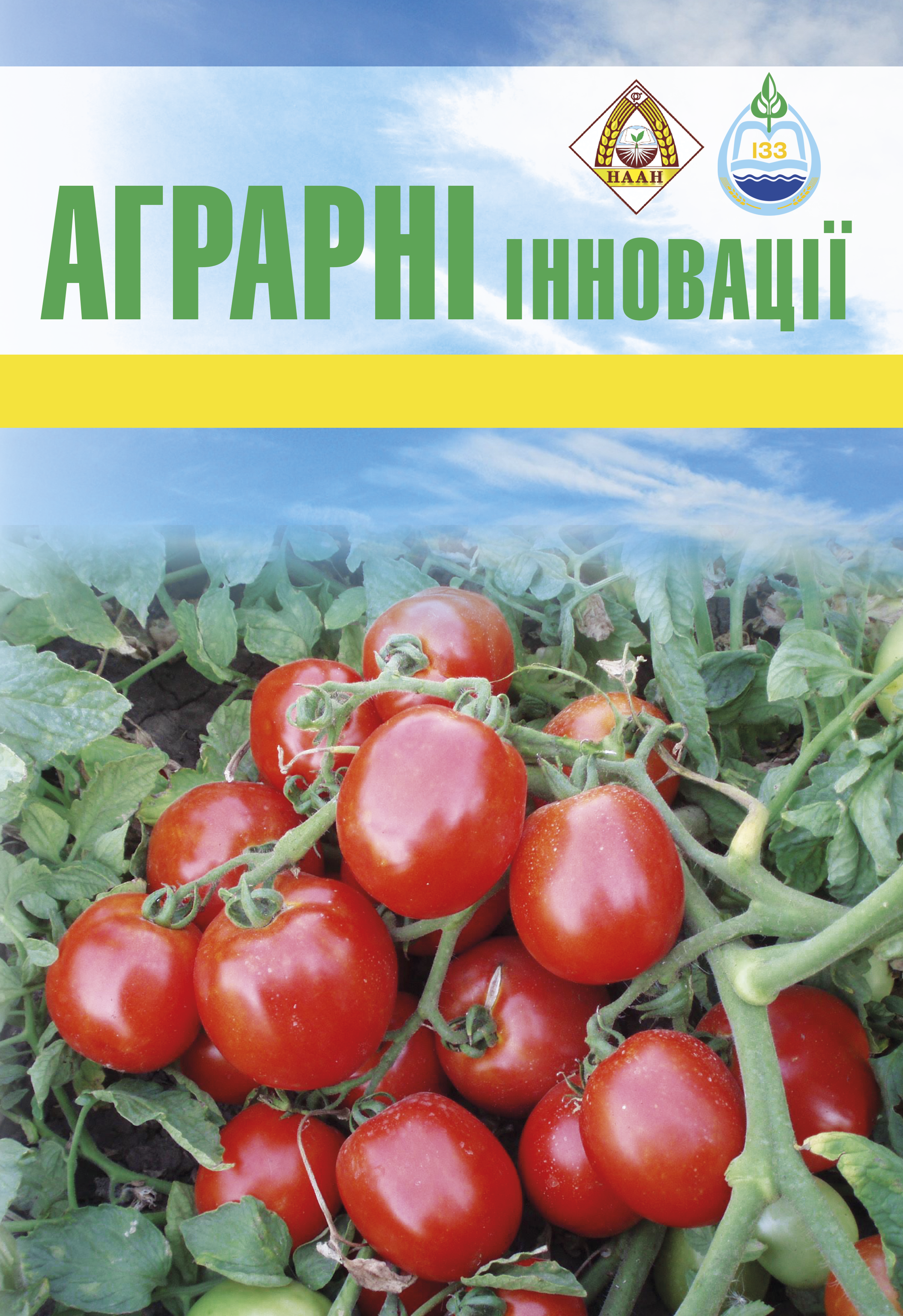Вплив амінокислотних регуляторів росту на ріст та розвиток рослин пшениці озимої різних різновидів
Анотація
Мета. Встановити вплив амінокислотних регуляторів росту на ріст та розвиток рослин пшениці озимоїрізних різновидів. Методи. Польовий, лабораторний,математично-статистичний. Результати. Дослідженняпроходили на дослідному полі Донецької ДСДС НААНу 2022–2024 рр. Для досліджень використовували сортипшениці озимої м’якої Вежа (Lutescens) та Юзовська(Erythrospermum). Дослідженнями доведена ефективність передпосівної обробки насіння пшениці озимоїамінокислотними регуляторами росту при формуваннірослинами біометричних показників. Так рослинисорту Юзовська формували найвищій показник коефіцієнту продуктивного кущіння за використання препарату Нова-Марин, шо перевищило контроль на 0,4.Найвищий коефіцієнт загального кущіння сорту Вежабув при використанні препарату Нова-ПЕГ – 7,0, якийперевищив контроль на 3,6. Найбільший ефект на показники структури врожаю рослин сорту Юзовська забезпечувало поєднання препаратів Нова-Марин та Нова-ПЕГ.Так довжина колосу збільшилась порівняно з контролемна 1,6 см, маса зерен у колосі на 0,32 г, кількість зерену колосі – на 8 шт., маса 1000 зерен – 7,9 г. Рослини пшениці озимої сорту Юзовська, не залежно від препарату,сформували врожайність на рівні 4,4–4,5 т/га, що на36,4 % перевищувало контрольний варіант. Вплив регуляторів росту на рослини сорту Вежа був більш розрізнений. Врожайність варіювала від 4,9 т/га (при використанні препарату Нова-Сід) до 6,2 т/га (при використанніпрепарату Нова-ПЕГ). Висновки. Впровадження у технологічний процес вирощування пшениці озимої лінійкиамінокислотних біопрепаратів дозволяє стабілізувати фізіологічні процеси рослин пшениці озимої в гостро-посушливих умовах східної частини Північного СтепуУкраїни, що в свою чергу істотно впливає на зерновупродуктивність рослин.
Посилання
2. Черенков А. В., Гасанова І. І., Солодушко М. М. Пшениця озима – розвиток та селекція культури в історичному аспекті. Бюлетень Інституту сільського господарства степової зони. 2014. № 6. С. 3–6.
3. Солодушко М. М. Урожайність та адаптивний потенціал сучасних сортів пшениці м’якої озимої в умовах Північного Степу. Сортовивчення та охорона прав на сорти рослин. 2014. № 3. С. 61–66.
4. Chakraborty S. P., Newton A. C. Climate change, plant diseases and food security: an overview Plant Pathol. 2011. Vol. 60. Р. 2–14.
5. Гамаюнова В. В., Корхова М. М., Панфілова А. В., Смірнова І. В., Коваленко О. А., Хоненко Л. Г. Пшениця озима: ресурсний потенціал та технологія вирощування: монографія. Миколаїв, 2021. 300 с.
6. Мащенко Ю. В., Кулик Г. А., Трикіна Н. М., Малаховська В. О. Урожайність пшениці озимої у сівозмінах степу залежно від систем удобрення та біопрепарату. Аграрні інновації. 2023. № 18. С. 77–83. https://doi.org/10.32848/agrar.innov.2023.18.11.
7. Чугрій Г. А. Формування врожайності пшениці озимої залежно від елементів технології вирощування в умовах північного Степу України. Таврійський науковий вісник. 2020. № 111. С. 152–157. https://doi.org/10.32851/2226-0099.2020.111.21
8. Чугрій Г. А., Вискуб Р. С., Поплевко В. І., Шульц П, Скнипа Н. Л. Наукові принципи підбору сортів пшениці м’якої озимої за адаптивними ознаками. Аграрні інновації. 2022. № 11. С. 60–67. https://doi.org/10.32848/agrar.innov.2022.11.8
9. Чугрій Г.А. Оцінка ефективності вирощування пшениці озимої за трьома технологіями: інтенсивна, органо-адаптивна та органічна. Таврійський науковий вісник. 2020. № 112. С. 166–173. https://doi.org/10.32851/2226-0099.2020.112.24
10. Вінюков О. О., Бондарева О. Б., Коробова О. М., Чугрій Г. А. Вплив біопрепаратів на продуктивність пшениці озимої на різних фонах живлення в умовах Донецької обл. Вісник аграрної науки. 2018. № 11. С. 41–47. https://doi.org/10.31073/agrovisnyk201811-06
11. Ярчук І. І., Мельник Т. В., Черних С. А. Технологічні якості та урожайність зерна пшениці твердої озимої залежно від застосування біологічно активних препаратів. Вісник ПДАА. 2021. № 2. С. 107–113.
12. Марковська О. Є., Гречишкіна Т. А., Лавренко Н. М. Вплив елементів технології вирощування на урожайність та якість зерна сортів пшениці озимої в умовах Південного Степу України. Colloquium-Journal. Agricultural Sciences. 2020. 19 (71). DOI:10.24411/2520-6990-2020-12053.
13. Черенков А. В., Козельський О. М. Вплив агротехнологічних прийомів вирощування на зернову продуктивність пшениці озимої. Вісник ЖНАЕУ. 2015. No 1(47). С. 215–222.
14. Найдьонова О. Є. Застосування гумінового препарату «Humin plus» в органічному землеробстві. Вісник Харківського національного аграрного університету імені В. В. Докучаєва. 2015. № 2. С. 39–50.
15. Wang J. Y., Lin P.-Y., Al-Babili S. On the biosynthesis and evolution of apocarotenoid plant growth regulators, Seminars in Cell & Developmental Biology. 2021. Vol.109, 3–11. doi: 10.1016/j.semcdb.2020.07.007.
16. Саблук Р. П., Коваленко О. В. Сучасні тенденції світового виробництва зерна. Вісник аграрної науки. 2009. № 8. С. 74–78.
17. Науково-обґрунтована система ведення агропромислового виробництва Донеччини. Донецьк: Регіон, 2007. 511 с.
18. Методичні вказівки щодо проведення польових дослідів з вивчення технологій вирощування зернових культур. Київ: ІЗ УААН, 2003. 22 с.






